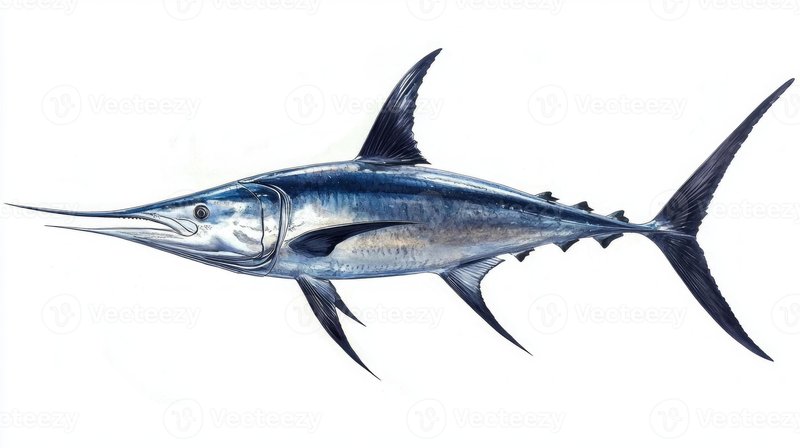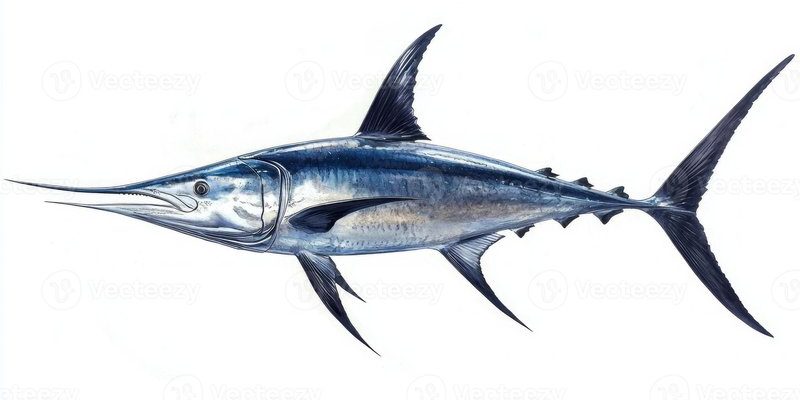
Swordfish are not just impressive because of their size or speed; they’re also essential for the health of their environments. They help control the populations of the species they prey on, ensuring that no single type of fish dominates the waters. This balance is vital for a healthy ocean ecosystem. Let’s dive into the various aspects of the swordfish’s role in marine ecosystems, exploring their behaviors, habitats, and the impact they have on the underwater world.
Understanding the Swordfish
Before we get into their role in ecosystems, let’s take a closer look at what a swordfish really is. Swordfish, scientifically known as *Xiphias gladius*, are large fish that can grow up to 10 feet long and weigh as much as 1,400 pounds. They’re easily recognizable by their long, flat bills which resemble swords—hence the name.
These fish are found in warmer waters across the globe, from the Atlantic to the Pacific Oceans. Generally, they prefer the open ocean rather than coastal areas. This oceanic lifestyle means they are constantly on the move, which is a significant factor in their ecological role. Swordfish are also known for their incredible speed, capable of swimming at speeds over 60 miles per hour. Their swiftness aids in hunting but also helps them evade larger predators.
The Predator-Prey Relationship
One of the most critical roles of the swordfish in marine ecosystems is their position as a top predator. They primarily feed on a variety of fish, squid, and other marine creatures. By controlling the populations of these species, swordfish help maintain a balance in the underwater food chain.
Here’s the thing: when a top predator like the swordfish is removed from the ecosystem, it can lead to overpopulation of its prey. This overpopulation can have cascading effects, harming the health of the entire ecosystem. For example, if swordfish were to decline, the fish and squids they eat might multiply unchecked, leading to competition for resources among themselves and possibly even the collapse of local fish populations.
Impact on Marine Biodiversity
Swordfish are not just important as predators; they also support a rich marine biodiversity. Their hunting practices can influence the distribution and behavior of their prey. By keeping those populations in check, they allow other species to thrive.
Let’s say you have a diverse marine community featuring various fish, crustaceans, and other creatures. When swordfish hunt effectively, they help preserve the diversity by ensuring that no single species can dominate. This diversity is essential for a resilient marine ecosystem, as it allows for various species to adapt to changes and respond to challenges, such as climate change or habitat loss.
The Role in the Food Web
Swordfish play a significant role in the marine food web, acting as both predator and prey. While they are at the top of their food chain, they are also prey for larger sharks and other marine mammals. This dual role illustrates their importance in the food web.
When swordfish are abundant, they provide a reliable food source for these larger predators. If swordfish populations decline, it can lead to food scarcity for these top predators, which may then impact their numbers as well. This interconnectedness highlights how the health of the swordfish population directly influences a variety of other marine species, maintaining the balance of the ecosystem.
Swordfish and Human Interaction
Human activity has a significant impact on swordfish populations. Overfishing is one of the primary threats faced by these remarkable fish. The demand for swordfish in commercial fishing can lead to unsustainable practices that threaten their survival.
It’s essential for us to understand that our actions can ripple through the marine ecosystem. We have a responsibility to manage our fishing practices wisely and promote sustainable methods to protect not only swordfish but also the broader marine environment. By supporting sustainable seafood initiatives, we can help ensure that swordfish continue to play their vital roles in the ocean for generations to come.
Conservation Efforts
Recognizing the importance of swordfish, various conservation efforts are underway to protect their populations. Organizations and governments around the world are working to implement fishing regulations and promote sustainable practices to ensure that swordfish can thrive in their natural habitats.
Many of these efforts include setting quotas on how many swordfish can be caught and establishing protected areas where they can spawn and grow without the pressure of fishing. Public awareness campaigns also play a crucial role in educating consumers about the impact of their choices on marine ecosystems. By making informed decisions, individuals can contribute to the protection of these majestic fish.
In summary, swordfish are more than just impressive creatures of the sea; they are integral players in marine ecosystems. Their role as top predators helps maintain the balance of species, supports biodiversity, and influences the entire food web. As we face challenges like overfishing and climate change, it’s vital to recognize the swordfish’s importance and the need for sustainable practices to protect them.
By valuing swordfish and their unique contributions to the ocean, we can better appreciate the intricate web of life beneath the waves. Every species, including the swordfish, plays a part in the health of our oceans. Let’s work together to ensure that these remarkable fish continue to thrive, keeping our oceans vibrant and balanced.

